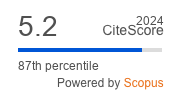Article | Open Access
Unequal Turnout Among the Newly Enfranchised: The Role of Political Efficacy
| Views: | 2653 | | | Downloads: | 3557 |
Abstract: Unequal political participation increasingly challenges democracies. The turnout gap is particularly large among younger voters, with severe implications for future developments of democratic representation, legitimacy, and quality. This article focuses on the role of political efficacy beliefs in explaining unequal turnout among newly enfranchised citizens. We argue that internal political efficacy beliefs are particularly important for turnout among the newly enfranchised from lower-class backgrounds, as they lack alternative mobilizing factors such as politically aware and active parents, political knowledge, and mobilizing networks. Furthermore, we argue that once these voters successfully turn out in their first election, they are as likely as those from higher-class backgrounds to turn out in their second election. We empirically test these arguments using original longitudinal data on newly enfranchised citizens from three German federal states (Bundesländer). Overall, our results support the argument: Political efficacy beliefs are a stronger predictor of first turnout among young adults from disadvantaged backgrounds compared to those from more advantaged backgrounds, and those who do turn out are as likely as those with higher-class backgrounds to turn out in their second election. This highlights the relevance of political efficacy beliefs in the (re)production of persisting political inequality.
Keywords: first‐time voters; Germany; habitual voting; multilevel system; panel studies; political efficacy; political inequality
Supplementary Files:
Published:
© Susanne Garritzmann, Sigrid Roßteutscher, Arndt Leininger, Birgit Becker, Thorsten Faas, Max P. Jansen, Armin Schäfer. This is an open access article distributed under the terms of the Creative Commons Attribution 4.0 license (http://creativecommons.org/licenses/by/4.0), which permits any use, distribution, and reproduction of the work without further permission provided the original author(s) and source are credited.


